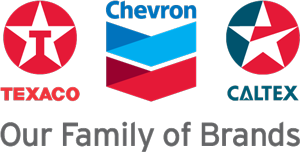Fleet Management – How does 2022 look?


According to MarketsandMarkets' report, the global fleet management size is predicted to rise from $20.6 billion in 2021 to $33.9 billion by 2026. The fleet management industry has developed further in the post-pandemic world as organizations are embracing new digital shifts to improve efficiency and manage costs. So, here is what the major trends in fleet management are leaning towards in 2022.
Focusing on labor retention would be one of the key trends in 2022. Often fleet managers expect to have a large staff of experts, but the reality is different. There is always a risk of being short-staffed because of budgetary constraints. So, instead of focusing on many staff, the focus should be on staff retention and providing them with the training they need. In order to keep employees and attract new talent, many fleets are turning to incentives — whether bonuses, improving work-life balance through scheduling and PTO benefits, or focusing on employee engagement.
Prioritizing budgetary requirements and making tough decisions are other aspects that fleet managers will need to look out for this year. Let’s face it: one never has enough budget. There will always be a requirement for more. Fleet managers, be prepared for some hard conversations this year regarding prioritising the right programs.
While the cost of fuel is almost always in a state of mild fluctuation, this year doesn’t offer much in the way of crucial price projections. Additionally, oil companies are wary about overproducing should the demand drop again. This leaves the fleet industry in a shaky situation, as the current surplus of crude oil may initially diminish fuel costs, creating a false sense of stability and security. Should oil production not rise, we could look at higher prices and possible fuel shortages. If demand is diminished because of another pandemic wave, fuel prices should remain relatively steady.
Selecting and highlighting goals is going to be more crucial than ever in 2022, to ensure that the company’s fleet department is on track.
Being organized is going to be more crucial than ever for the fleet department with the need to keep track of daily metrics to personnel paperwork to work orders, purchase orders and more.
Focusing on driver safety measures is going to be a key focus in 2022. With no respite from the Covid-19 virus and its mutations, there is a need to prioritise driver safety by strengthening sanitisation measures on vehicle inspections and ensuring they are fortified with the tools and products. This will help drivers and staff and show that you are prepared to lessen the risks and exposure to the virus.
Automated fleet processes will continue to be a theme for 2022, especially in fleet management trends. Fleet management software (FMS) and solutions have been rising in popularity as requisite tools for streamlining daily processes through automated workflows, better collaboration, and mobile capabilities, allowing for real-time communication.
In short, the fleet industry will continue to see innovation and advancements in 2022 with greater tech integrations and improved fleet management software features required to boost operational efficiency and boost the tracking and management of fleets.





























